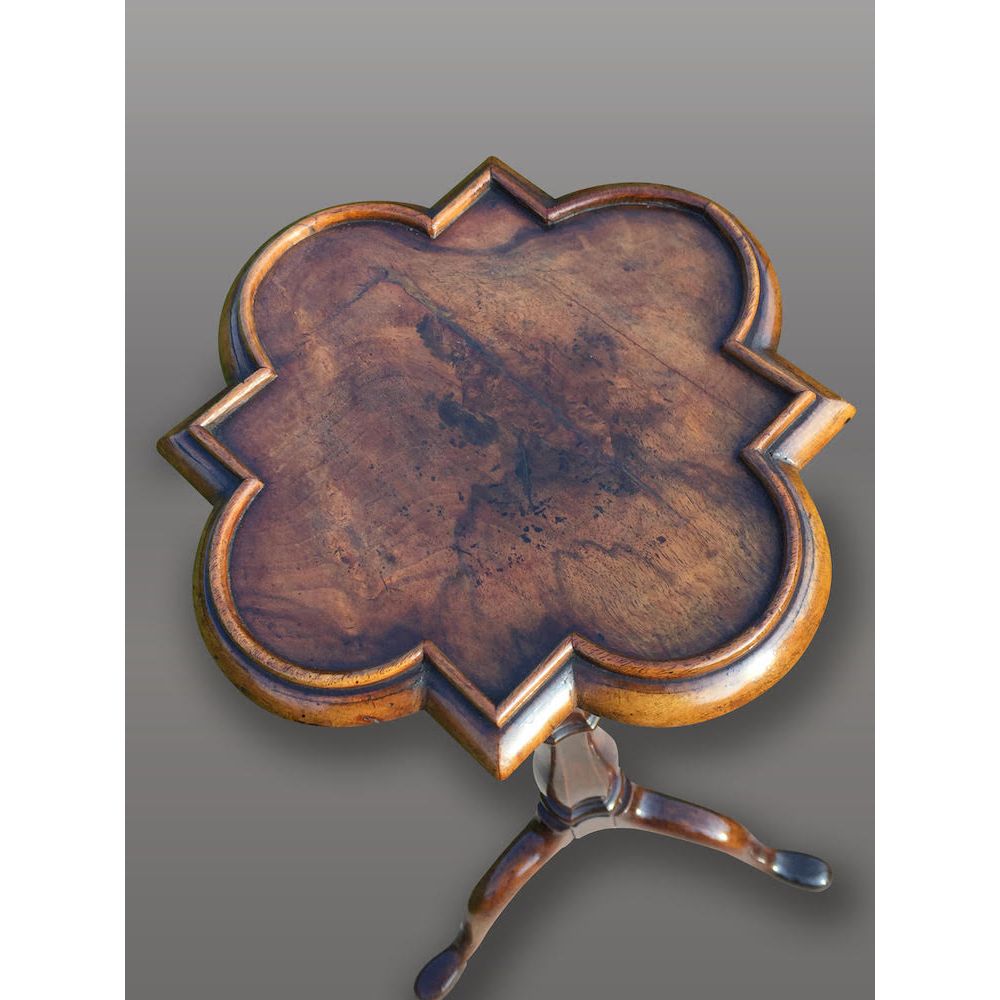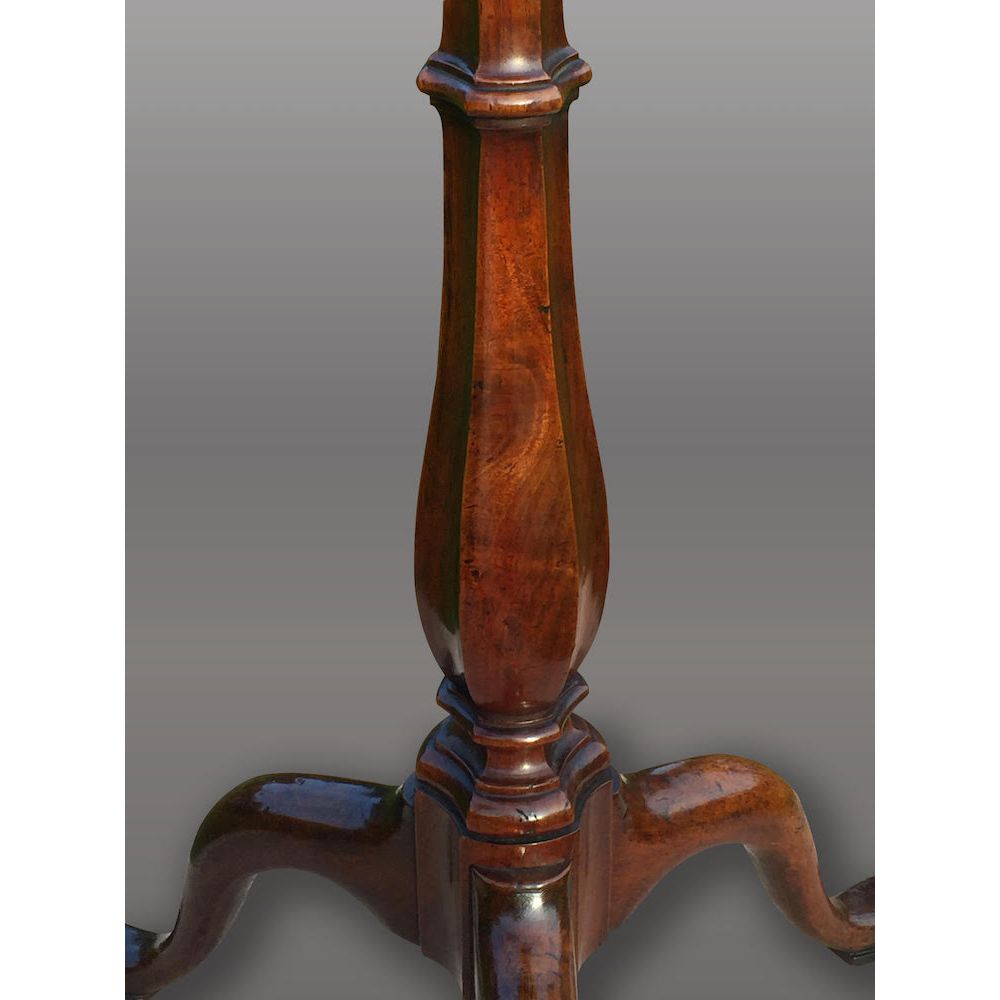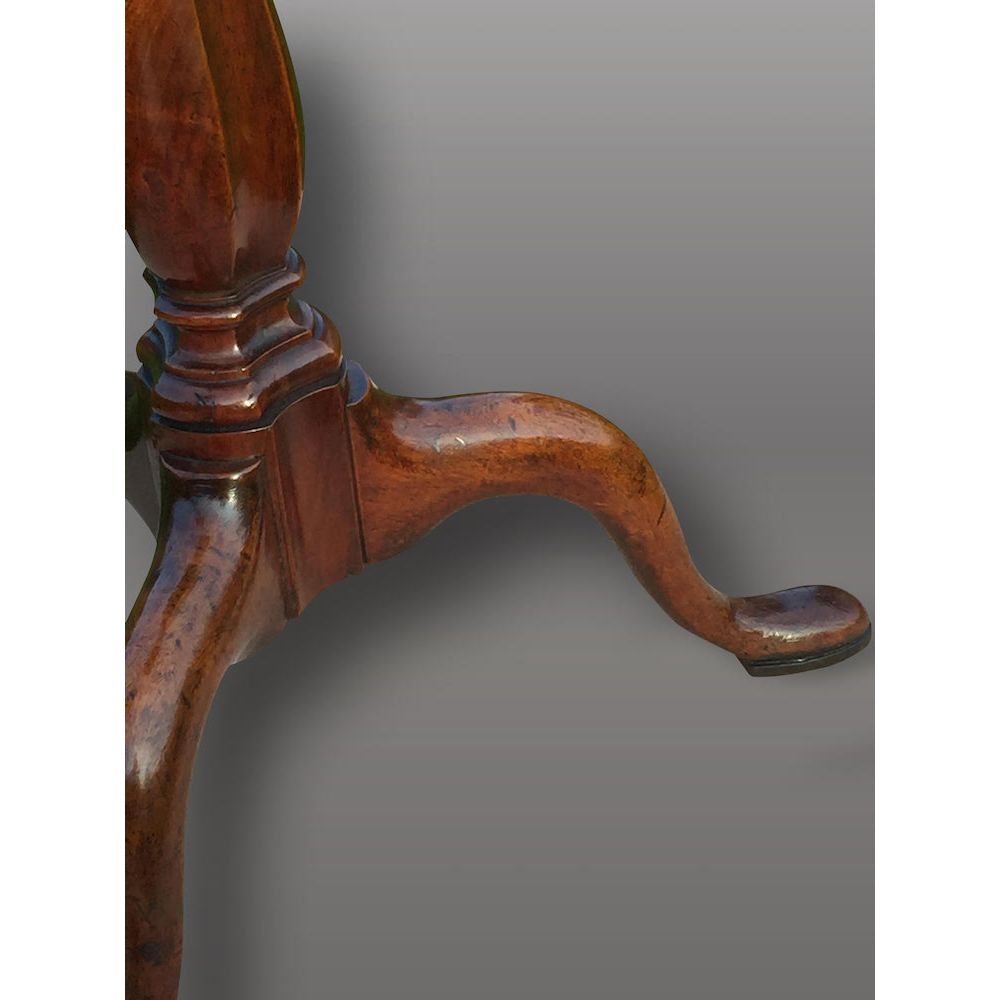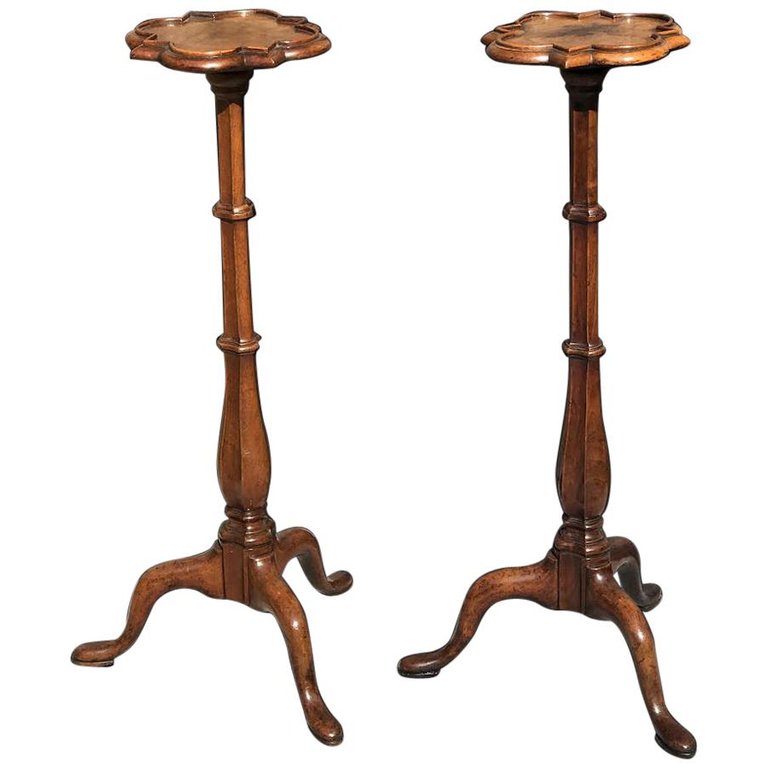Description
A pair of English early-18th century walnut torchères / candle stands.
George II period, circa 1730.
Of excellent colour and well-patinated surfaces.
The ‘barbed quatrefoil’ figured tops with slightly raised edges are supported on carved and faceted, gently-spreading columns with carved collars. The whole raised on well-drawn tripod supports.
Torchères were used as stands for candles, and were usually placed in pairs on either side of a table to illuminate a 17th- or 18th- century drawing room.
The form of this torchere can be compared to candle stands that were originally part of the surtout du service particulier de l’Empereur, commissioned by Napoleon in 1807 from the Sèvres porcelain factory, then under the direction of Alexandre Brongniart. Some of the various biscuit porcelain elements of the surtout were influenced by the antiquities in the Musée Napoléon. The candelabra in the surtout, which were modelled by Jean Charles Nicolas Brachard in May 1809, were based on an original in marble that was in the Pio Clementino Museum, before being placed in the Louvre as part of the Tolentino Treaty in 1797.
Nb. A pair of mahogany and parcel-gilt torchères of George II style (early 20th century) sold at Christies for £27,500 – The collector: English furniture, clocks & works of art, London, 13 Nov 2018.
A pair of candelabra of related form was sold at Sotheby’s London, 4th July 2012, lot 34.
A further pair of the same model is in the Louvre Museum.
A pair of George II mahogany torcheres, circa 1730, sold for £37,500 at Sothebys, lot 60, 8th March 2016, London. We prefer our pair on offer here.
Literature:
For a very good example see Thomas Chippendale’s original drawing, circa 1760, of a torchere in the George Lock collection at the Victoria & Albert Museum.
See also English Furniture Designs of the 18th century, Peter Ward-Jackson (1958) p. 46 & p. 119.
It is unusual to find a pair in walnut, which helps date them to the first half of the 18th century. These torcheres or candlestands are more frequently encountered in mahogany and as such would be of a slightly later date.
Pairs of torchères frequently became separated. Single examples, as a result, are worth considerably less.
Nb.
The unusual barbed-quatrefoil shape of these tops is a standard quatrefoil pierced at the angles by the points of an inscribed square, which generates an image akin to an heraldic rose, which is termed barbed due to the stylised thorns which project at the intersection of each pair of petals. The earliest example of the barbed quatrefoil appears on the south transept buttresses in the Cathedral of Notre Dame in Paris, in 1260.
A quatrefoil is a representation of a four-leaf clover, universally recognised as a portent of good luck.
Measures:
H: 93 cm
W: (top) 27 cm.














